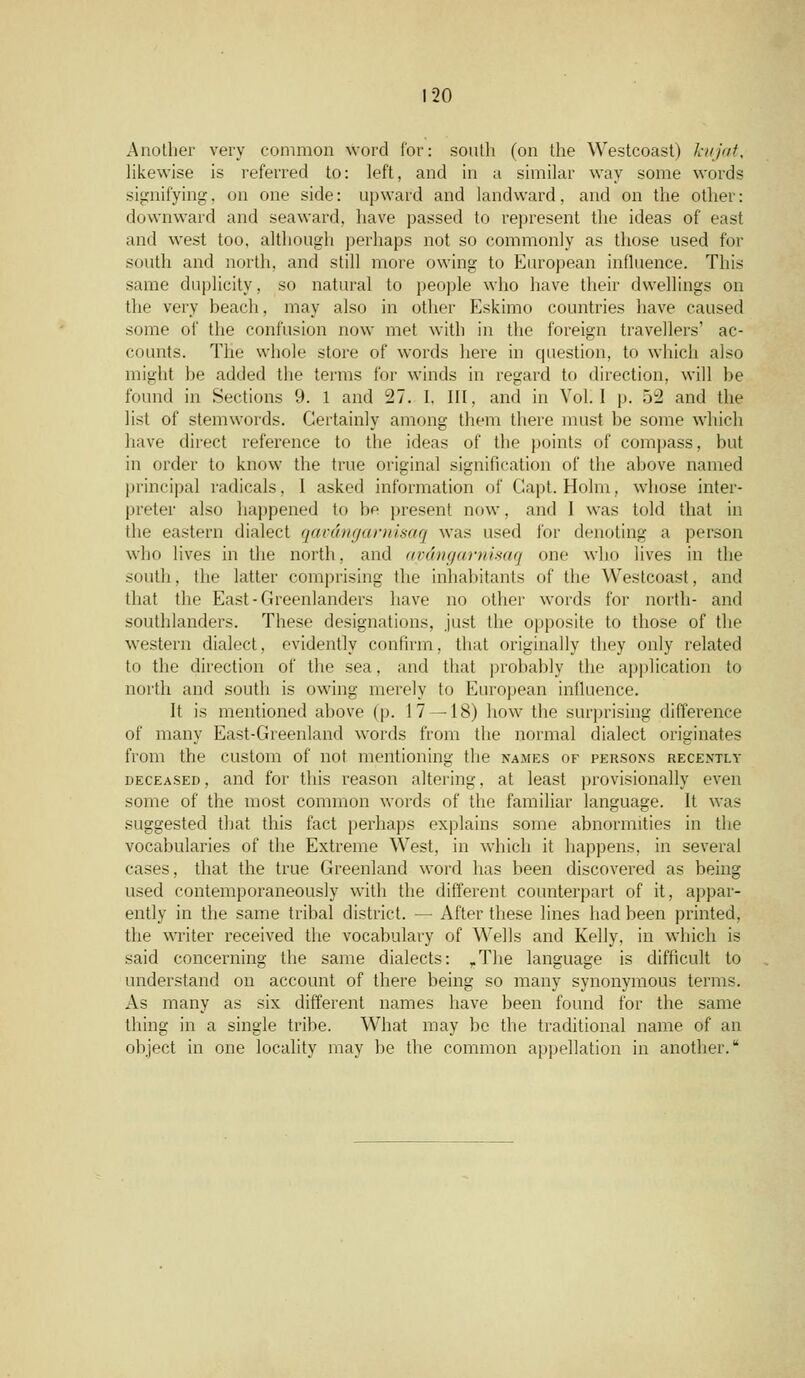
Full resolution (JPEG) - On this page / på denna sida - Notes - 4) Linguistical

<< prev. page << föreg. sida << >> nästa sida >> next page >>
Below is the raw OCR text
from the above scanned image.
Do you see an error? Proofread the page now!
Här nedan syns maskintolkade texten från faksimilbilden ovan.
Ser du något fel? Korrekturläs sidan nu!
This page has been proofread at least once.
(diff)
(history)
Denna sida har korrekturlästs minst en gång.
(skillnad)
(historik)
Another very common word for: south (on the Westcoast) kujat,
likewise is referred to: left, and in a similar way some words
signifying, on one side: upward and landward, and on the other:
downward and seaward, have passed to represent the ideas of east
and west too, although perhaps not so commonly as those used for
south and north, and still more owing to European influence. This
same duplicity, so natural to people who have their dwellings on
the very beach, may also in other Eskimo countries have caused
some of the confusion now met with in the foreign travellers’
accounts. The whole store of words here in question, to which also
might be added the terms for winds in regard to direction, will be
found in Sections 9. 1 and 27. I, III, and in Vol. I p. 52 and the
list of stemwords. Certainly among them there must be some which
have direct reference to the ideas of the points of compass, but
in order to know the true original signification of the above named
principal radicals, I asked information of Capt. Holm, whose
interpreter also happened to be present now, and I was told that in
the eastern dialect qavángarnisaq was used for denoting a person
who lives in the north, and avángarnisaq one who lives in the
south, the latter comprising the inhabitants of the Westcoast, and
that the East-Greenlanders have no other words for north- and
southlanders. These designations, just the opposite to those of the
western dialect, evidently confirm, that originally they only related
to the direction of the sea, and that probably the application to
north and south is owing merely to European influence.
It is mentioned above (p. 17—18) how the surprising difference
of many East-Greenland words from the normal dialect originates
from the custom of not mentioning the names of persons recently
deceased, and for this reason altering, at least provisionally even
some of the most common words of the familiar language. It was
suggested that this fact perhaps explains some abnormities in the
vocabularies of the Extreme West, in which it happens, in several
cases, that the true Greenland word has been discovered as being
used contemporaneously with the different counterpart of it,
apparently in the same tribal district. — After these lines had been printed,
the writer received the vocabulary of Wells and Kelly, in which is
said concerning the same dialects: „The language is difficult to
understand on account of there being so many synonymous terms.
As many as six different names have been found for the same
thing in a single tribe. What may be the traditional name of an
object in one locality may be the common appellation in another.“
<< prev. page << föreg. sida << >> nästa sida >> next page >>